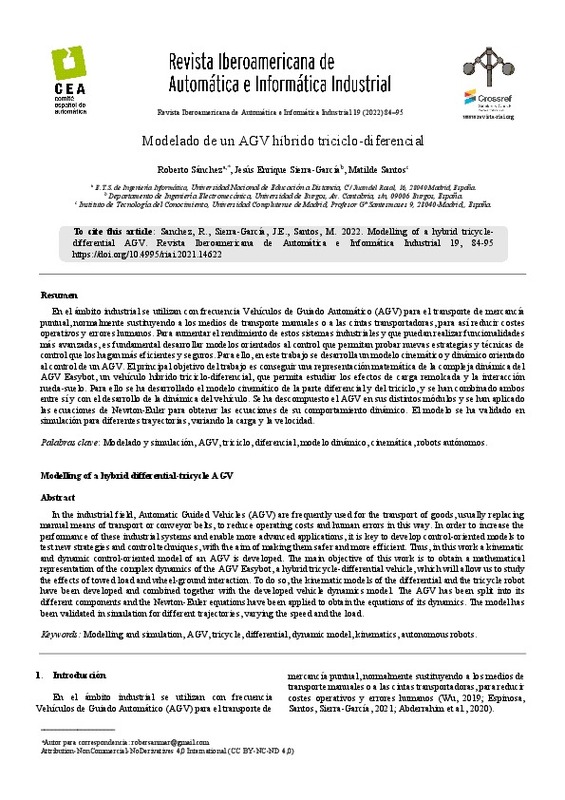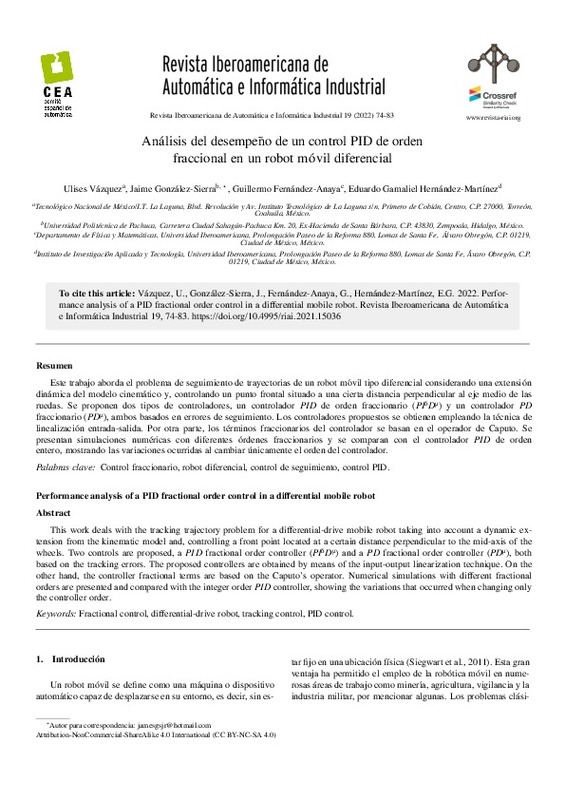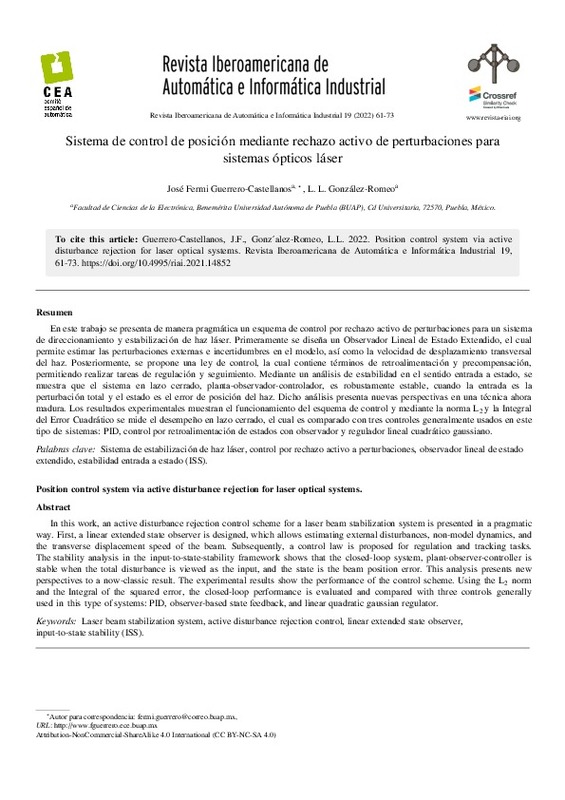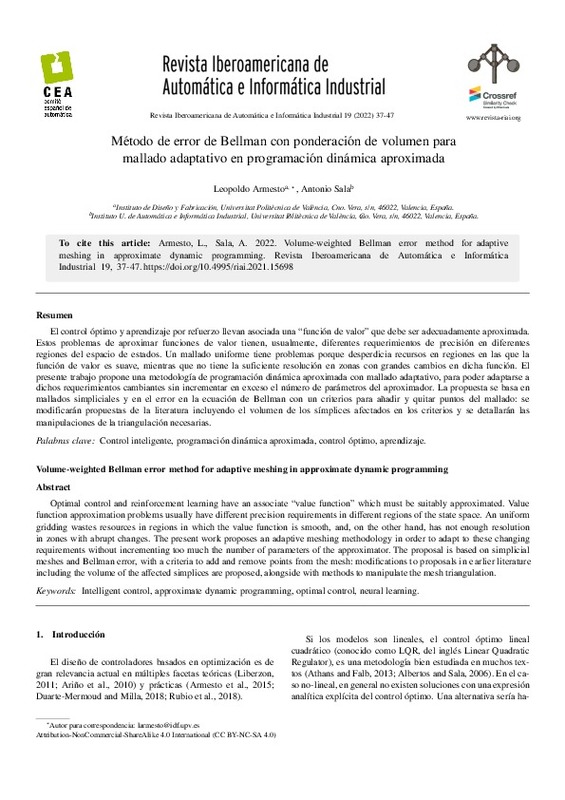- RiuNet repositorio UPV
- :
- Investigación
- :
- Material investigación. Editorial UPV
- :
- Revistas UPV. Editorial UPV
- :
- RIAI - Revista Iberoamericana de Automática e Informática industrial
- :
- Revista Iberoamericana de Automática e Informática Industrial- Vol 19, No 1 (2022)
JavaScript is disabled for your browser. Some features of this site may not work without it.
Refinar
Revista Iberoamericana de Automática e Informática Industrial- Vol 19, No 1 (2022)
Tabla de contenidos
Presentación
Nota de Redacción
Tutoriales
- Control predictivo de sistemas ciberfísicos
Artículos
- Integración de la estrategia FMBPC en una estructura de control predictivo en lazo cerrado. Aplicación al control de fangos activados
- Control mixto para el seguimiento de trayectoria en buques marinos
- Método de error de Bellman con ponderación de volumen para mallado adaptativo en programación dinámica aproximada
- Control mediante rechazo activo de perturbaciones de la temperatura de un módulo termoeléctrico
- Sistema de control de posición mediante rechazo activo de perturbaciones para sistemas ópticos láser
- Análisis del desempeño de un control PID de orden fraccional en un robot móvil diferencial
- Modelado de un AGV híbrido triciclo-diferencial
- Resultados experimentales del control de un sistema de teleoperación bilateral de robots con retardos variantes en el tiempo
- Discriminador binario de imaginación visual a partir de señales EEG basado en redes neuronales convolucionales









